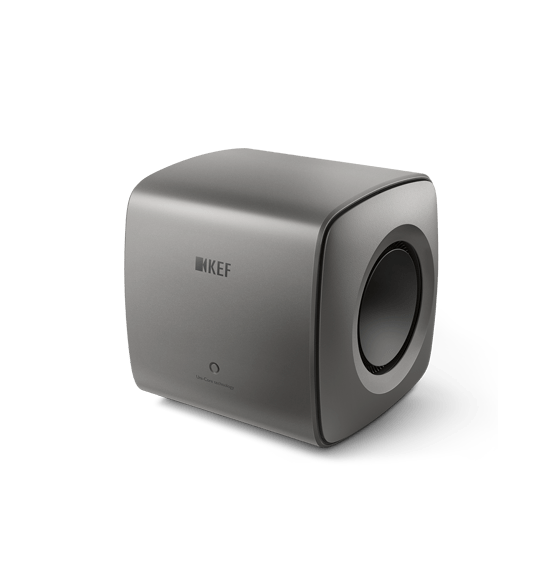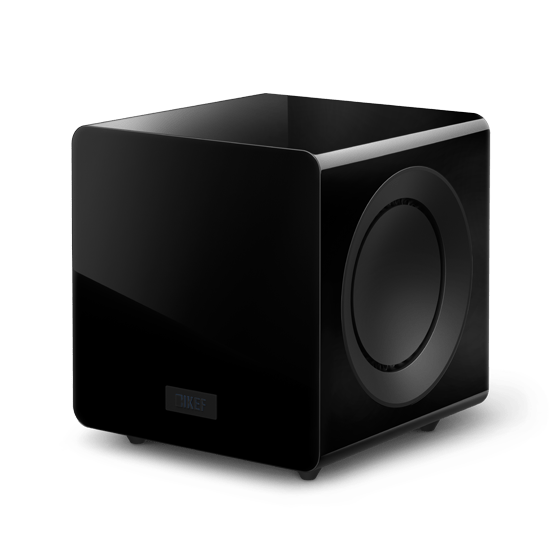The evolution of music is directly related to technological and societal advances, and always has been. Music is produced for how and why we listen to it, and throughout history, it’s benefited from and been at the cutting edge of technology.
KEF has been around for over 60 years, and over several decades, has seen technology evolve in several ways. It’s estimated that the origins of music date back roughly 37,000 years, and we’ve been lucky enough to witness a period of exponential growth for both music and technology. Let’s take a closer look at the relationship between the two.
At its core, music serves as a means of communication. These days, music is easily accessible and exists purely for entertainment - but this hasn’t always been the case. For example, 150 years ago, recorded music didn’t exist. Every musical experience that people had was immediate and in-person. Music simply ceased to exist once performed, and could only be revisited in memory, or recreated from notations.
The first musical instrument was the human body itself. Before orchestral objects were created, hand clapping and vocals were used to convey feelings and situations. As our storytelling evolved, so too did our methods of making music. Two instruments that are known to date back to ancient civilisations are the flute and the drum, oftentimes fashioned from animal skin and tree trunks.
Music was one of the first tools humans ever used to record history. These days, we use music for a variety of reasons, many of which relate to personal expression. However, this hasn’t always been the case. For the most part, musical experiences throughout history have been communal. It wasn’t until recording and playback technology became more widely available that music became more personal and intimate. While concerts and festivals still serve the community aspect of music, they’re not what we do every day. Around 70 years ago, most of the music we consumed was from live performances. But now, with the advancement of technology, music has somehow become even more personal, despite us being more disconnected from the performer and performance than ever.
During the 20th Century, nightclubs, bars and pubs all played major roles in the development of certain genres of music, especially jazz, rock ‘n’ roll, country and blues. Throughout the ‘70s, hip hop gained popularity as a genre and spurned further creativity. While some music programs may have been limited in resources, the need for expression always existed, which led to even more innovation within a genre that was already breaking barriers. Almost 50 years later, hip hop remains one of the most enduring musical styles with fans in every corner of the world.
Another big change in the way we consume music lies in the fact that we listen on smaller home systems while we engage in other activities. This is where pop music comes in. Oftentimes, we need songs that offer rhythm and hooks instead of distractingly complicated chord structures. When running errands or working from home, for example, we want music with heavy bass and catchy lyrics that we can happily hum along to in the background as opposed to anything too bold or overwhelming.
In the ‘80s and ‘90s, music was largely consumed as an accompaniment to a visual medium. The ‘80s was a time of tremendous technological development, especially in the digital realm. Snare drums were bigger, melodies were brasher, and productions were bolder and more complicated. Recordings were bright and spread wide across the soundstage to ensure songs played well over televisions and car radios. We shared communal musical experiences in hockey arenas and football stadiums; in order to reach people a quarter of a mile from the stage, everything had to be larger than life.
The ‘70s were probably the last decade of communal listening to recorded music. Home stereos were reaching heights never seen before, and without video games and the scores of other entertainment options available today, music was the thing that bonded people together. Live music was generally consumed in theatres and halls, so music sounded more complicated and ethereal. Punk was meant to be heard in small pubs and nightclubs, so it was simple and loud, while disco, just like EDM today, was meant to be felt more. Jazz was played to small, discerning audiences in coffee houses and nightclubs, and simple quartets with acoustic instruments provided the intimate experience audiences expected.
In the ‘60s, folk and R & B were the most popular genres of music. Thanks to the availability of the transistor, for the first time ever, radios became portable. However, this meant that sound quality was limited, so the hook became the most important section of any song. If the melody could cut through the noise and low-fidelity playback, it could become a memorable earworm. If not, it was unlikely that songs would get very much exposure. However, as the ‘70s approached, multi-track recording studios meant that artists could record whole albums on tapes, which people could then listen to at home.
Throughout the ‘30s and ‘40s, concerts and dance halls were extremely popular, which meant that musicians had to play louder to be heard over the crowds. Without the amplification technologies we have today, the way to solve that problem was through the sheer size of the music. Horn sections carried the melodies, while the “rhythm section” evolved to drive the beat.
At the start of the 20th Century, blues and country music were written for an immediate audience – typically a gathering on a front porch or church social – and stringed instruments were loud enough to convey the song to the intended audience. The subject matter was an extension of the storytelling and history-keeping that had always been music’s primary function. A sharecropper in Mississippi had a story to tell that was his and his alone, yet it was the same story a listener in Chicago could relate to – this was, and always has been, the connection we have to music and musicians.
From the Renaissance through to the 18th Century, music began to grow from simple storytelling for a small audience to an artform intended for the people who had the money to subsidise the art and the artist. Chamber and Baroque music, consisting of small stringed ensembles (typically a quartet) were written for small audiences in rooms and halls in estates and palaces. As we entered the Industrial Age in the 19th Century, people found themselves with free time and disposable income. Music evolved alongside society and symphonic music, and was played by large orchestras in large halls for larger audiences. The technological advancements that lead to the rise in personal wealth ushered in the era of large-scale performances.
During this time, particularly in the West, church music spread as a result of massive cathedrals being built with new inventions such as the pipe organ. The argument could also be made that the massive churches and cathedrals in Europe were built as an expression of musical technology rather than as a result of it. Exploiting the cathedral’s reverberation times, music became an experience meant for the masses. Melodies were simple and repetitive, enhancing the meditative experience. A similar effect is obtained by the Islamic adhan recited from a mosque’s minaret by the mu’azzin – a musical call that goes directly to the soul of the listener.
Throughout our history, we have had one constant companion – music. Sometimes using technology to lead us, and other times taking advantage of new technology to further enhance our experience with it, music is at once universal and highly personal.
Music is imprinted in our souls and cultures because of the messages it conveys – happiness, sadness, loss, regret, hope for the future, and a simple telling of stories we relate to as our own. It’s interesting to look at any genre of music and see how it was written, produced, and performed for the intended audience and medium. It’s also interesting to look at how technology and progress have constantly changed our relationship with music.
Music is a reflection of the times, and the times are a reflection of what the music is capable of doing – a truly symbiotic relationship if there ever was one.










